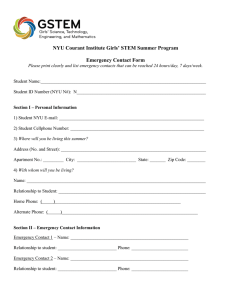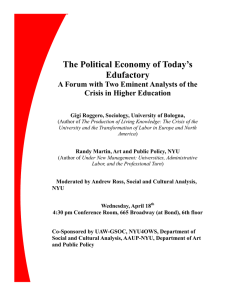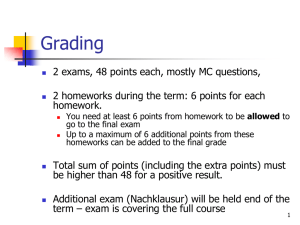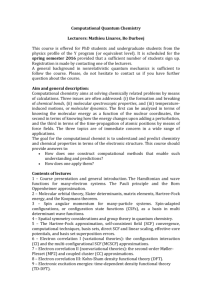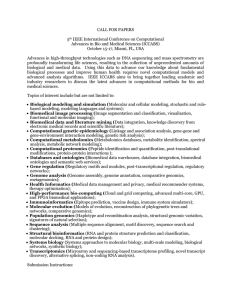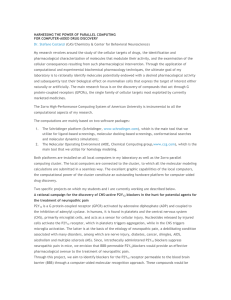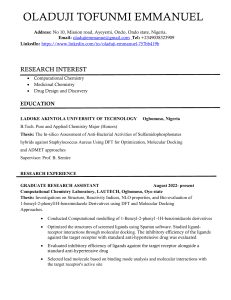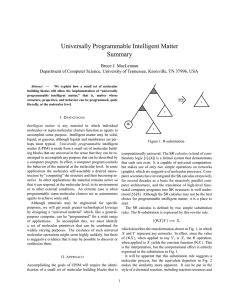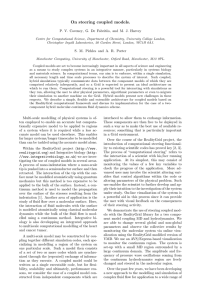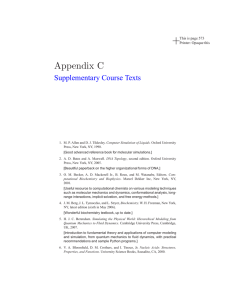Assignment 9 The Successes ( ) of Molecular Modeling
advertisement
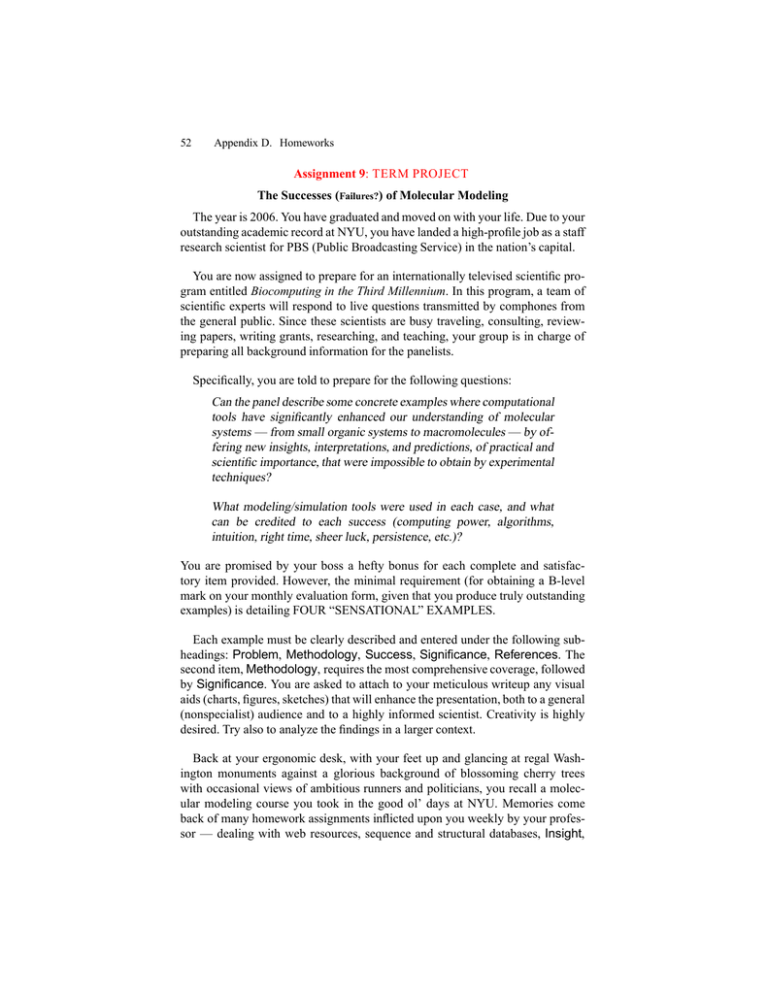
52 Appendix D. Homeworks Assignment 9: TERM PROJECT The Successes (Failures?) of Molecular Modeling The year is 2006. You have graduated and moved on with your life. Due to your outstanding academic record at NYU, you have landed a high-profile job as a staff research scientist for PBS (Public Broadcasting Service) in the nation’s capital. You are now assigned to prepare for an internationally televised scientific program entitled Biocomputing in the Third Millennium. In this program, a team of scientific experts will respond to live questions transmitted by comphones from the general public. Since these scientists are busy traveling, consulting, reviewing papers, writing grants, researching, and teaching, your group is in charge of preparing all background information for the panelists. Specifically, you are told to prepare for the following questions: Can the panel describe some concrete examples where computational tools have significantly enhanced our understanding of molecular systems — from small organic systems to macromolecules — by offering new insights, interpretations, and predictions, of practical and scientific importance, that were impossible to obtain by experimental techniques? What modeling/simulation tools were used in each case, and what can be credited to each success (computing power, algorithms, intuition, right time, sheer luck, persistence, etc.)? You are promised by your boss a hefty bonus for each complete and satisfactory item provided. However, the minimal requirement (for obtaining a B-level mark on your monthly evaluation form, given that you produce truly outstanding examples) is detailing FOUR “SENSATIONAL” EXAMPLES. Each example must be clearly described and entered under the following subheadings: Problem, Methodology, Success, Significance, References. The second item, Methodology, requires the most comprehensive coverage, followed by Significance. You are asked to attach to your meticulous writeup any visual aids (charts, figures, sketches) that will enhance the presentation, both to a general (nonspecialist) audience and to a highly informed scientist. Creativity is highly desired. Try also to analyze the findings in a larger context. Back at your ergonomic desk, with your feet up and glancing at regal Washington monuments against a glorious background of blossoming cherry trees with occasional views of ambitious runners and politicians, you recall a molecular modeling course you took in the good ol’ days at NYU. Memories come back of many homework assignments inflicted upon you weekly by your professor — dealing with web resources, sequence and structural databases, Insight, Appendix D. Homeworks 53 sequence/structure contests, force fields, tedious programming, difficult minimization, and Monte Carlo simulations. You find fragments of lecture notes and transparency copies inside an old purple gym bag and begin to follow up on, and explore, some of those key words, resources, authors, and topics. You also begin to wonder if there are any interesting and instructive examples of failures in molecular modeling and decide to pursue those for an extra bonus. (Maybe the boss will let you design the next scientific program?) Your deadline in early May is rapidly approaching and you begin to work early and diligently. The promise that the best examples provided by the crew will be published, if appropriate, in an article provides further motivation for the assignment. You also decide to contact your professor if she is still at NYU when you get stuck or have questions. You find the project more interesting now, and vow to become famous (and maybe even rich)! Background Reading from Coursepack M. S. Friedrichs and P. G. Wolynes, “Toward Protein Tertiary Structure Recognition by Means of Associative Memory Hamiltonians”, Science 246, 371–373 (1989). T. Schlick, “Optimization Methods in Computational Chemistry”, in Reviews in Computational Chemistry, K. B. Lipkowitz and D. B. Boyd, Editors, Vol. 3, pp. 1–71, VCH Publishers, New York (1992). See also an updated version titled “Geometry Optimization” in the Encyclopedia of Computational Chemistry, P. von Ragué Schleyer (Editor-in-Chief) and N. L. Allinger, T. Clark, J. Gasteiger, P. A. Kollman, and H. F. Schaefer, III, Editors, Vol. 3, pp. 1136–1157, John Wiley & Sons, West Sussex, UK (1998). R. A. Abagyan and M. M. Totrov, “Biased Probability Monte Carlo Conformational Searches and Electrostatic Calculations for Peptides and Proteins”, J. Mol. Biol. 235, 983–1002 (1994).

